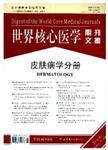帕金森病与刺激寻求特质、吸烟、饮酒和摄入咖啡因之间的关系
Relationship between impulsive sensation seeking traits, smoking, alcohol and caffeine intake, and Parkinson’s disease作者机构:Reta Lila Weston Institute of Neurological Studies Windeyer Building 46 Cleveland Street London W1T 4JF United Kingdom Prof.
出 版 物:《世界核心医学期刊文摘(神经病学分册)》 (Digest of the World Core Medical Journals.Clinical Neurology)
年 卷 期:2006年第8期
页 面:56-56页
学科分类:1002[医学-临床医学] 100204[医学-神经病学] 10[医学]
摘 要:Background: An inverse relation exists between smoking and coffee intake and Parkinson’s disease (PD). The present study explored whether this is explained by low sensation seeking, a personality trait believed to characterise PD. Methods: A total of 106 non- demented patients with PD and 106 age and sex matched healthy controls completed a short version of Zuckerman’s Sensation Seeking Scale (SSS), the Geriatric Depression Scale, and the Trait Anxiety Inventory. Data were collected on past and current cigarette smoking, and participants also completed food frequency questionnaires to estimate current caffeine and alcohol intake. Results: Patients with PD had lower sensation seeking and higher depression and anxiety scores. They were also less likely to have ever smoked, and had lower caffeine and alcohol intakes. Analysis of the data using conditional logistic regression suggested that the inverse association of PD risk with sensation seeking was independent of smoking, and caffeine and alcohol intake. Moreover, low sensation seeking explained some of the apparent effect of caffeine and alcohol intake on PD. However, the effect of smoking was weakened only slightly when SSS was included in the regression model. Conclusion: This study raises the possibility that there is a neurobiological link between low sensation seeking traits- which might underlie the parkinsonian personality- and the hypothetical protective effect of cigarette smoking and caffeine consumption on PD.



